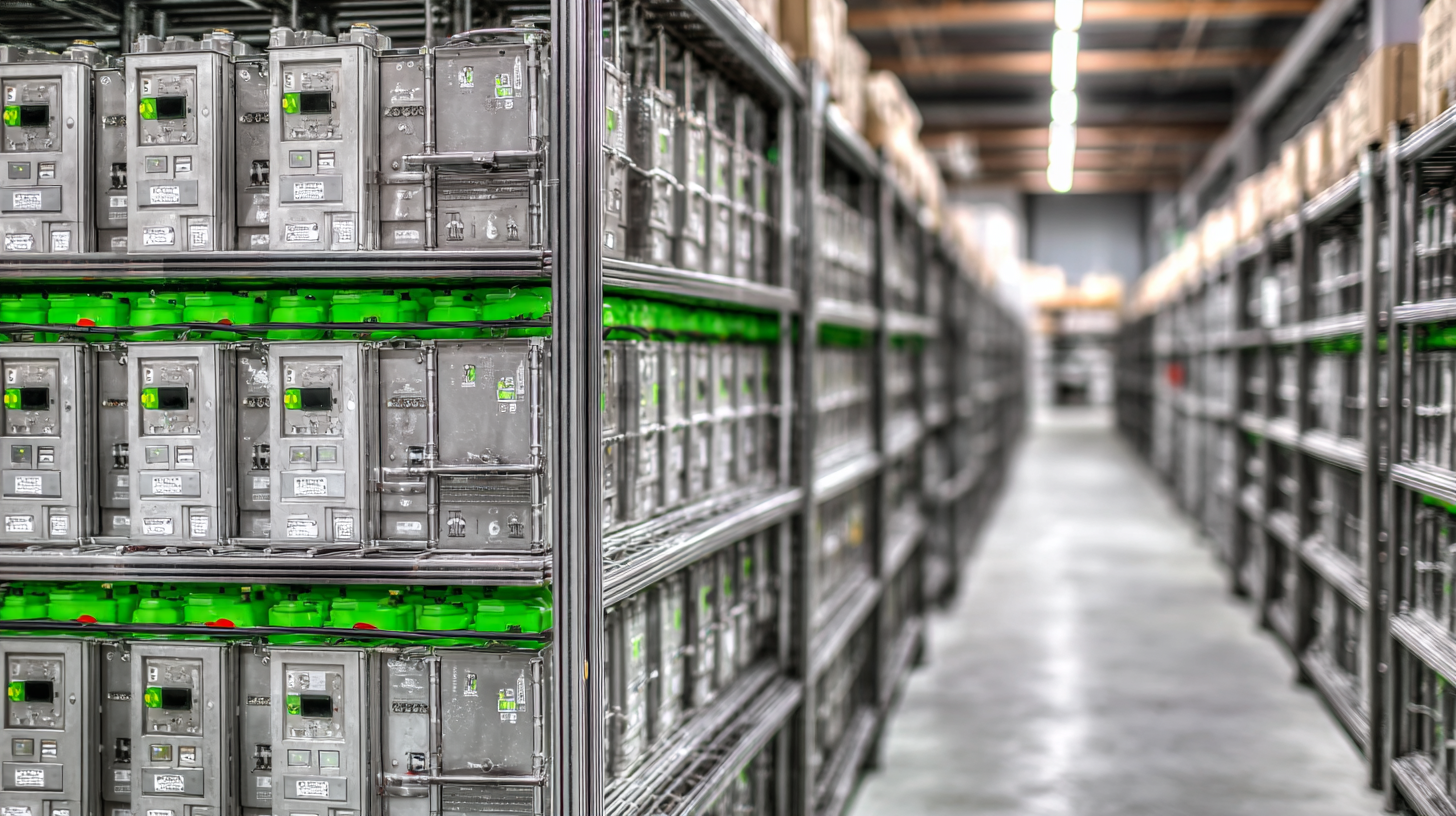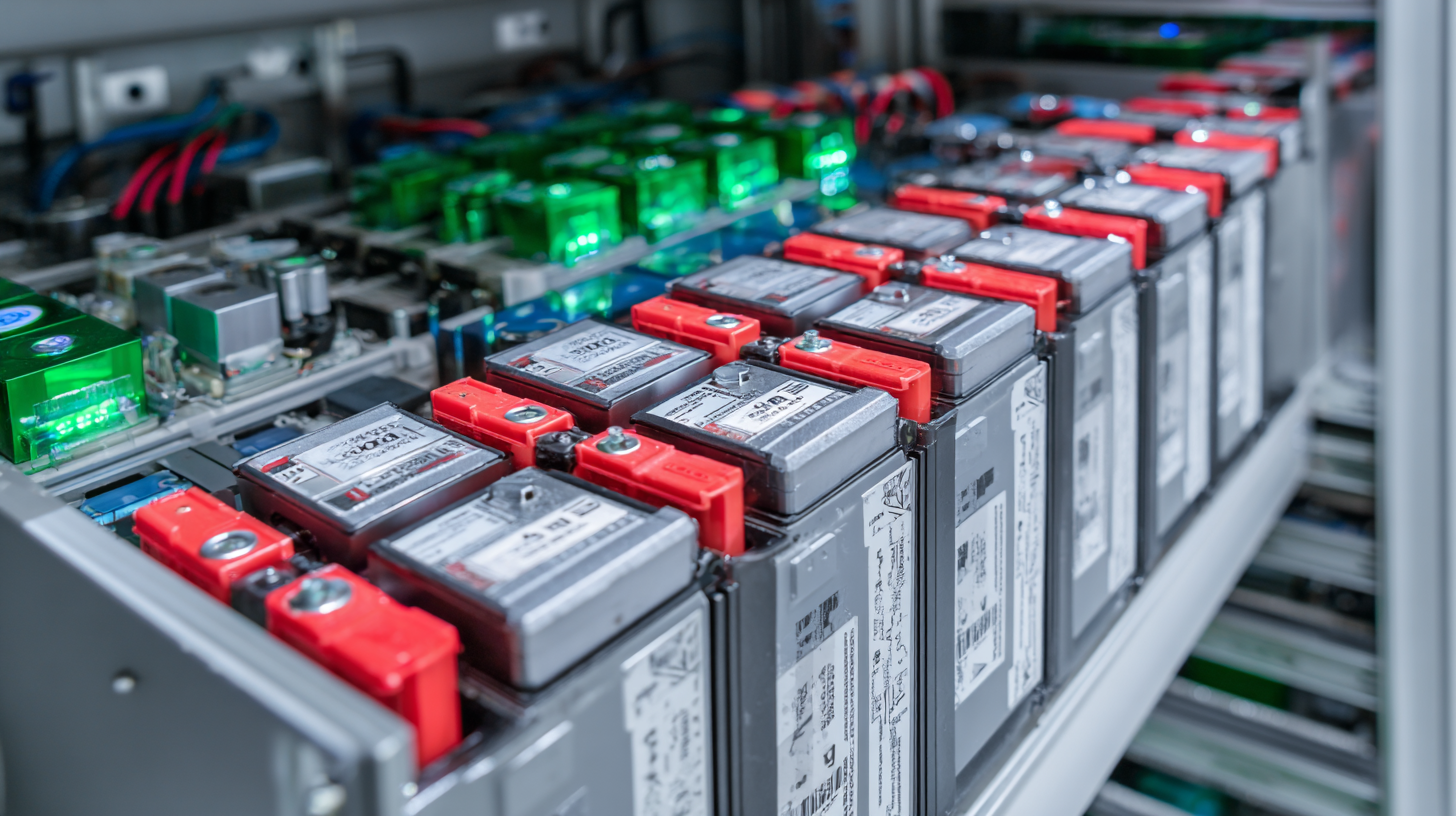5 Best Strategies for Power Storage Battery Efficiency
As the demand for renewable energy sources continues to grow, the importance of Power Storage Battery efficiency becomes increasingly critical. According to a report by the International Energy Agency, global battery storage capacity is expected to reach 2,850 GWh by 2030, which reflects a staggering increase from just 200 GWh in 2020. This paradigm shift places pressure on industries and consumers alike to enhance battery performance, reduce costs, and extend lifespan. The effectiveness of Power Storage Batteries not only supports the integration of solar and wind energy but also plays a fundamental role in stabilizing the grid. By employing the best strategies for enhancing battery efficiency, stakeholders can maximize their investment, minimize environmental impact, and pave the way for a sustainable energy future. This blog will explore the top five strategies to optimize Power Storage Battery efficiency, revealing how businesses and individuals can benefit from these advancements.

Key Features of Efficient Power Storage Batteries
Efficient power storage batteries are essential for maximizing energy use and sustainability in today's technological landscape. Key features that define an efficient power storage solution include high energy density, rapid charging capabilities, and long cycle life. A report by the International Energy Agency (IEA) highlights that lithium-ion batteries, which dominate the market, can achieve energy densities exceeding 250 Wh/kg, making them ideal for applications ranging from electric vehicles to renewable energy storage systems.
Another critical aspect is the battery's charging efficiency. According to a study published in the Journal of Power Sources, advancements in battery management systems (BMS) can improve charging efficiency by up to 20%, allowing batteries to reach full charge more quickly and with less energy loss. This feature is particularly valuable in grid-storage applications, where rapid response to energy demands is crucial. Furthermore, longevity plays a significant role; batteries with a cycle life exceeding 3,000 charge-discharge cycles can significantly reduce replacement costs and environmental impact, as cited in the latest report from Bloomberg New Energy Finance.
Ultimately, focusing on these key features—energy density, charging efficiency, and cycle life—can lead to more effective power storage solutions that meet the evolving demands of energy consumption and support the transition to sustainable energy systems.
Understanding Different Types of Power Storage Batteries
When it comes to power storage batteries, understanding the various types and their characteristics is crucial for maximizing efficiency. Generally, these batteries can be categorized into four main types: lead-acid, lithium-ion, nickel-metal hydride (NiMH), and flow batteries. According to a report by the International Energy Agency (IEA), lithium-ion batteries dominate the market, accounting for nearly 80% of storage capacities installed in 2020. Their high energy density and declining costs make them the preferred choice for both consumer electronics and electric vehicles.
 Lead-acid batteries, while older technology, still hold a significant share due to their robustness and lower initial costs. Industry data shows that they are particularly effective in applications requiring high discharge rates, such as uninterruptible power supplies (UPS). Meanwhile, emerging technologies like flow batteries are gaining attention for their scalability and long discharge durations, making them suitable for renewable energy integration. As the storage landscape evolves, understanding these diverse battery types will empower users to make informed decisions that enhance efficiency and performance.
Lead-acid batteries, while older technology, still hold a significant share due to their robustness and lower initial costs. Industry data shows that they are particularly effective in applications requiring high discharge rates, such as uninterruptible power supplies (UPS). Meanwhile, emerging technologies like flow batteries are gaining attention for their scalability and long discharge durations, making them suitable for renewable energy integration. As the storage landscape evolves, understanding these diverse battery types will empower users to make informed decisions that enhance efficiency and performance.
Techniques to Enhance Battery Charging Cycles
Maximizing battery efficiency involves not just choosing the right storage solution but also employing effective techniques to enhance charging cycles. Research by the National Renewable Energy Laboratory indicates that optimizing charging processes can significantly extend battery lifespan, with improvements in cycle count by up to 30%. Implementing strategies such as temperature management and controlled charging rates can lead to these improvements.
One effective tip is to maintain optimal temperature ranges during charging. Batteries charged in cooler conditions tend to have increased cycle stability and decreased degradation rates. Moreover, using the appropriate charging rate—often known as C-rate—can help in maximizing efficiency. For instance, charging at a lower C-rate can reduce stress on the battery and ensure longer life expectancy.
Additionally, employing smart charging technologies can greatly enhance the overall effectiveness of power storage batteries. These technologies can adjust charging patterns based on real-time data, ensuring that batteries are charged efficiently and safely. According to a report by Bloomberg New Energy Finance, implementing such smart solutions can potentially reduce energy costs by up to 20% while enhancing battery performance and lifespan.
Impact of Temperature Control on Battery Efficiency
Temperature control plays a crucial role in enhancing the efficiency and lifespan of power storage batteries, especially in electric vehicles (EVs) and other energy storage applications. Research highlights that improper temperature management can lead to accelerated battery degradation and performance losses. For instance, a recent study demonstrated that non-uniform temperature distributions ranging from 32 to 40 °C significantly affect the aging of lithium-ion batteries, particularly in scenarios where cells are connected in parallel. Maintaining optimal temperature ranges can reduce energy consumption and improve battery longevity by mitigating thermal stresses that otherwise contribute to capacity fade.
In addition to temperature control, the integration of advanced thermal management systems is essential for optimizing battery performance. The adoption of phase change materials (PCM) in passive battery thermal management systems has shown promising results. A review of these systems indicates that utilizing PCM can help maintain consistent battery temperatures, thus improving overall energy efficiency. Moreover, active thermal management systems are being developed to respond dynamically to varying driving conditions, which is critical given that temperature fluctuations can dramatically influence battery life cycles. As the demand for high-performance batteries continues to rise, understanding and implementing effective temperature control strategies will be vital for maximizing battery efficiency and sustainability in the evolving landscape of energy storage.
Impact of Temperature Control on Battery Efficiency
Benefits of Regular Maintenance for Power Storage Systems
Regular maintenance for power storage systems is essential in ensuring their efficiency and longevity. Just as with any technological asset, energy storage systems require consistent care to perform optimally. One of the primary benefits of regular maintenance is the prevention of unexpected failures. By periodically examining battery connections, monitoring charge cycles, and ensuring proper temperature regulation, operators can identify potential issues before they escalate, significantly reducing downtime and repair costs.
 Moreover, maintenance contributes to maximizing the lifespan of power storage batteries. Technological advancements have created various methods for improving battery performance, including high-frequency ripple current reduction techniques that enhance reliability in renewable energy applications. This alignment with sustainability initiatives such as electric vehicle use and tidal energy commercialization demonstrates the broad economic and environmental benefits of maintaining power storage systems. Adopting a proactive maintenance strategy not only improves system efficiency but also supports the decarbonization efforts necessary for a more sustainable energy future, aligning with current trends in renewable energy integration.
Moreover, maintenance contributes to maximizing the lifespan of power storage batteries. Technological advancements have created various methods for improving battery performance, including high-frequency ripple current reduction techniques that enhance reliability in renewable energy applications. This alignment with sustainability initiatives such as electric vehicle use and tidal energy commercialization demonstrates the broad economic and environmental benefits of maintaining power storage systems. Adopting a proactive maintenance strategy not only improves system efficiency but also supports the decarbonization efforts necessary for a more sustainable energy future, aligning with current trends in renewable energy integration.
